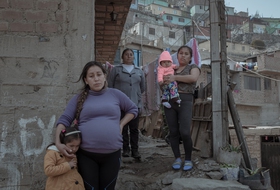
The Amazon became an alternative classroom during the pandemic. Now, the educational forest in Batraja, Bolivia, lives on to teach children and adults the value of nature.
In Sri Lanka, a micro-credit project for fisherwomen aims to safeguard and increase mangrove forests.
The fisherwomen of the village of Ambantotam, Sri Lanka, started to look differently at their sea and mangrove forests, they started to love and protect them. In fact, they have helped recreating and reinforcing an entire ecosystem thanks to a micro-credit project funded by Sudeesa, a national organisation working since 1997 to protect coastal ecosystems.
The scheme consists of giving a loan of 50 to 2,000 dollars to every woman living near mangrove forests, incentivising them to develop sustainable fishing methods and protect mangrove forests.
The initiative allowed these women to understand the importance of mangrove forests for coastal ecosystems, for the island inhabitants’ life and for the economy of local communities. “Now we know – and from us, our husbands and our community also have become aware” said Michel Priyadarshani, head of the fisherwomen’s group.
The test phase, that included 2,000 loans, was so positive that the rate of loan repayment by now accounts for 96 percent. Given the success obtained, the initiative will be applied in all Sri Lanka villages thanks to the American environmental association Seacology, that will make available 3.4 million dollars.
Mangrove forests Thirty years ago, the coastlines of the island were covered with 40,000 hectares of mangroves, while today only 9,000 hectares of forests are left: this was due to intensive deforestation to give place to shrimp farming facilities. Not only was the destruction of these forests harmful for fish habitats, but it represents the only way to protect coastal populations from floods.
Sri Lanka’s turn to mangrove protection is due to new president Maithripala Sirisena who, through the Forest Ordinance Act, declared the commercial exploitation of the area illegal.
The micro-credit national plan and the other projects of environmental protection, aims to safeguard the remaining hectares of forest as well as the planting of 3.8 hectares of mangroves.
Siamo anche su WhatsApp. Segui il canale ufficiale LifeGate per restare aggiornata, aggiornato sulle ultime notizie e sulle nostre attività.
![]()
Quest'opera è distribuita con Licenza Creative Commons Attribuzione - Non commerciale - Non opere derivate 4.0 Internazionale.
The Amazon became an alternative classroom during the pandemic. Now, the educational forest in Batraja, Bolivia, lives on to teach children and adults the value of nature.
One in three women have suffered physical or sexual violence. With contributions from Europe, Africa, Asia and Latin America, we look at how this shadow pandemic affects every corner of the world.
The Istanbul Convention against gender-based and domestic violence marks its tenth anniversary. We look at what it is, who its signatories are, and what the future might hold.
European Commission President Ursula von der Leyen reminded us of the gravity of violence against women around the world, and of the Istanbul Convention’s utmost importance.
President Erdoğan has pulled Turkey out of the Istanbul Convention, key in the fight against gender violence, claiming that it favours the LGBT community rather than family values.
Our species took its first steps in a world covered in trees. Today, forests offer us sustenance, shelter, and clean the air that we breathe.
Violence against women in Peru has increased as a result of Covid-19 lockdowns. 14,912 people were reported missing from January to November 2020, more than half of them minors and 64 per cent women. People have been confined to their homes for months, many forced to endure poor physical, economic and social conditions. A situation that
Joys Estefani Qqueccaño Huamani, 24, disappeared from her rural community in Peru on 9 October. Her family began looking for her independently of the authorities and despite the resistance of relatives of Joys Estefani’s ex-partner Arturo Ccana Condori, 32, charged with committing violence against her on 28 September, eleven days before Joys Estefani disappeared. Photos
Costa Rica celebrated its first same-sex marriage when two women, Alexandra Quiros and Dunia Araya, celebrated their wedding: an “extraordinary moment”.







